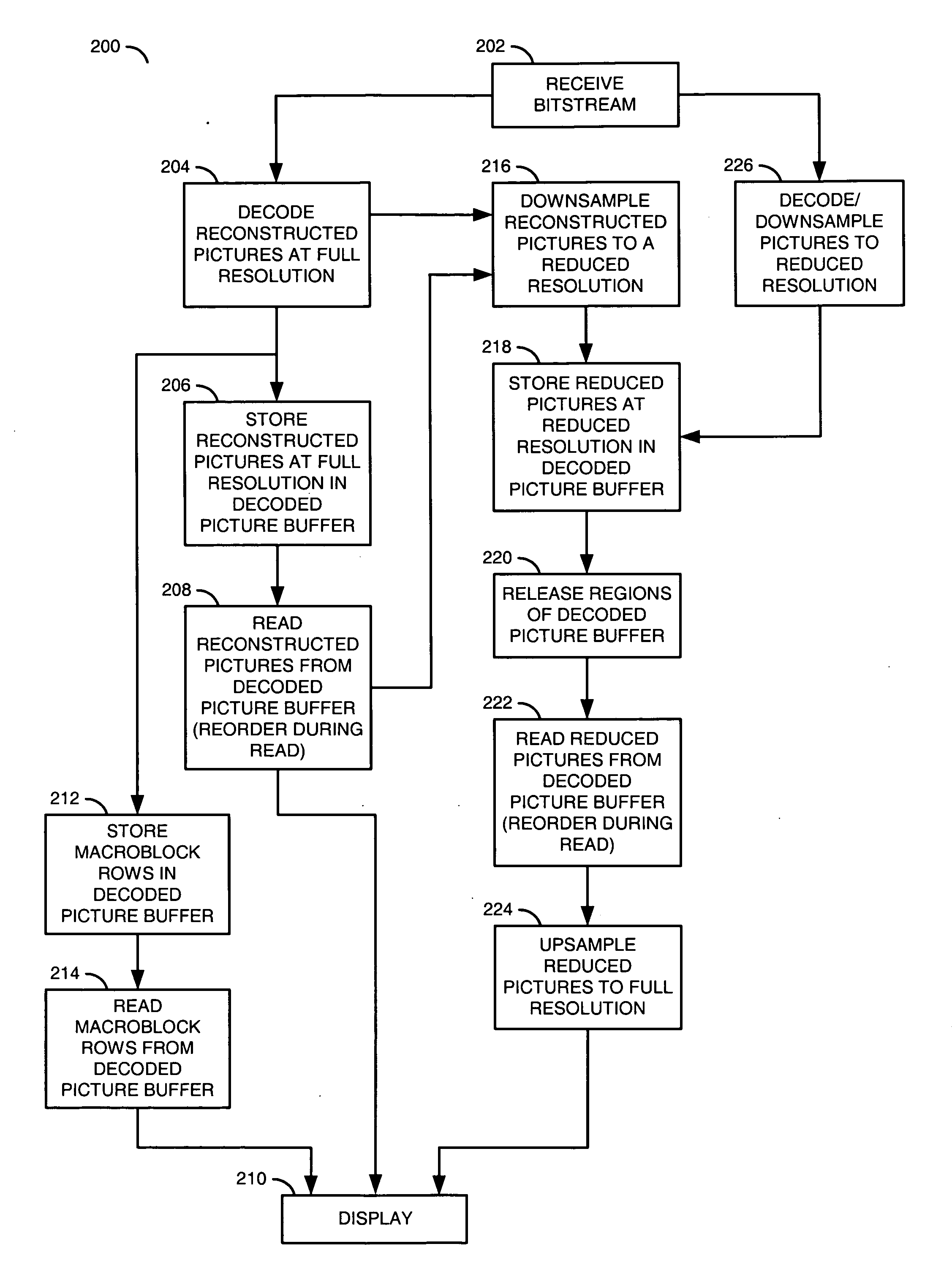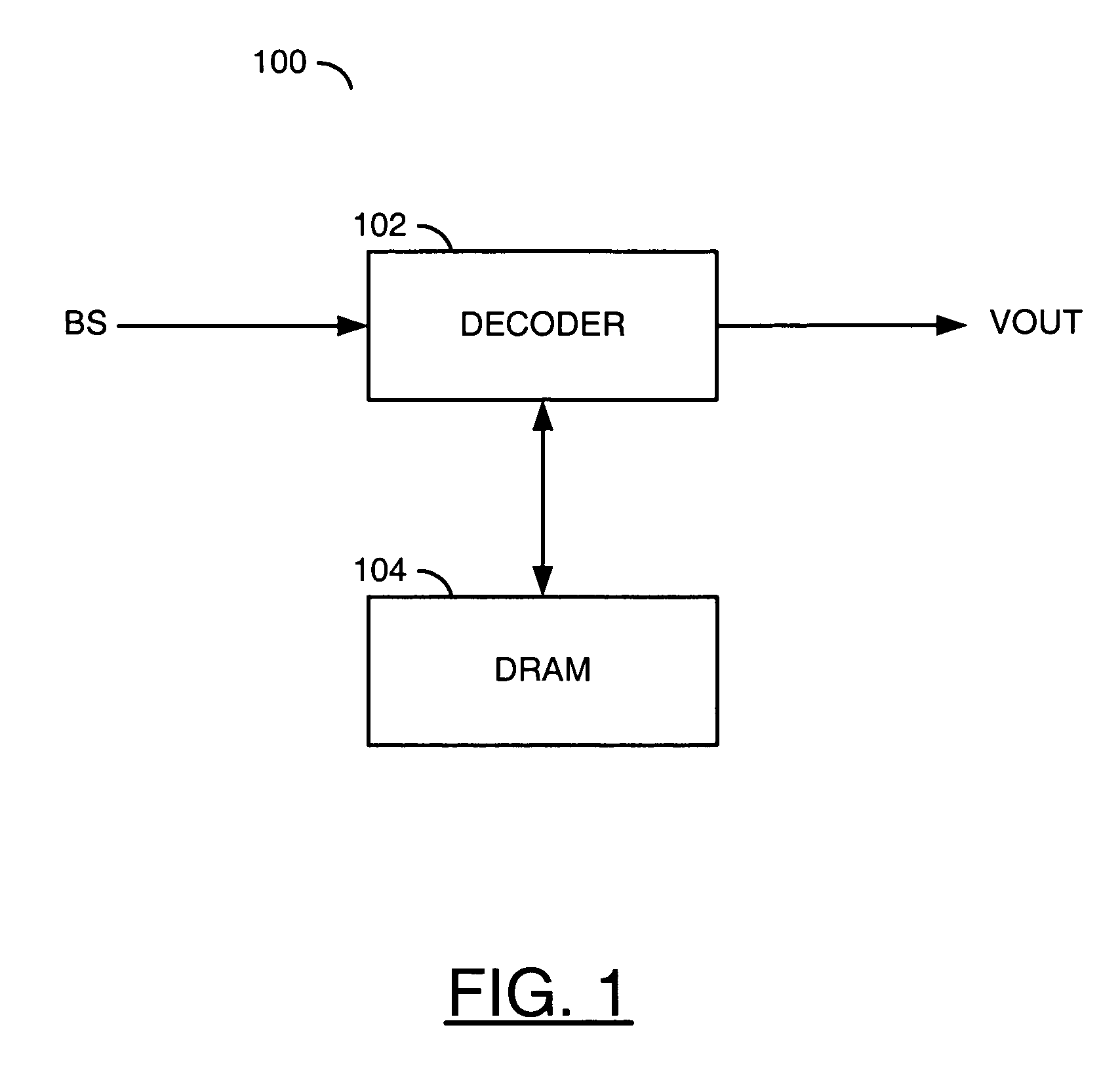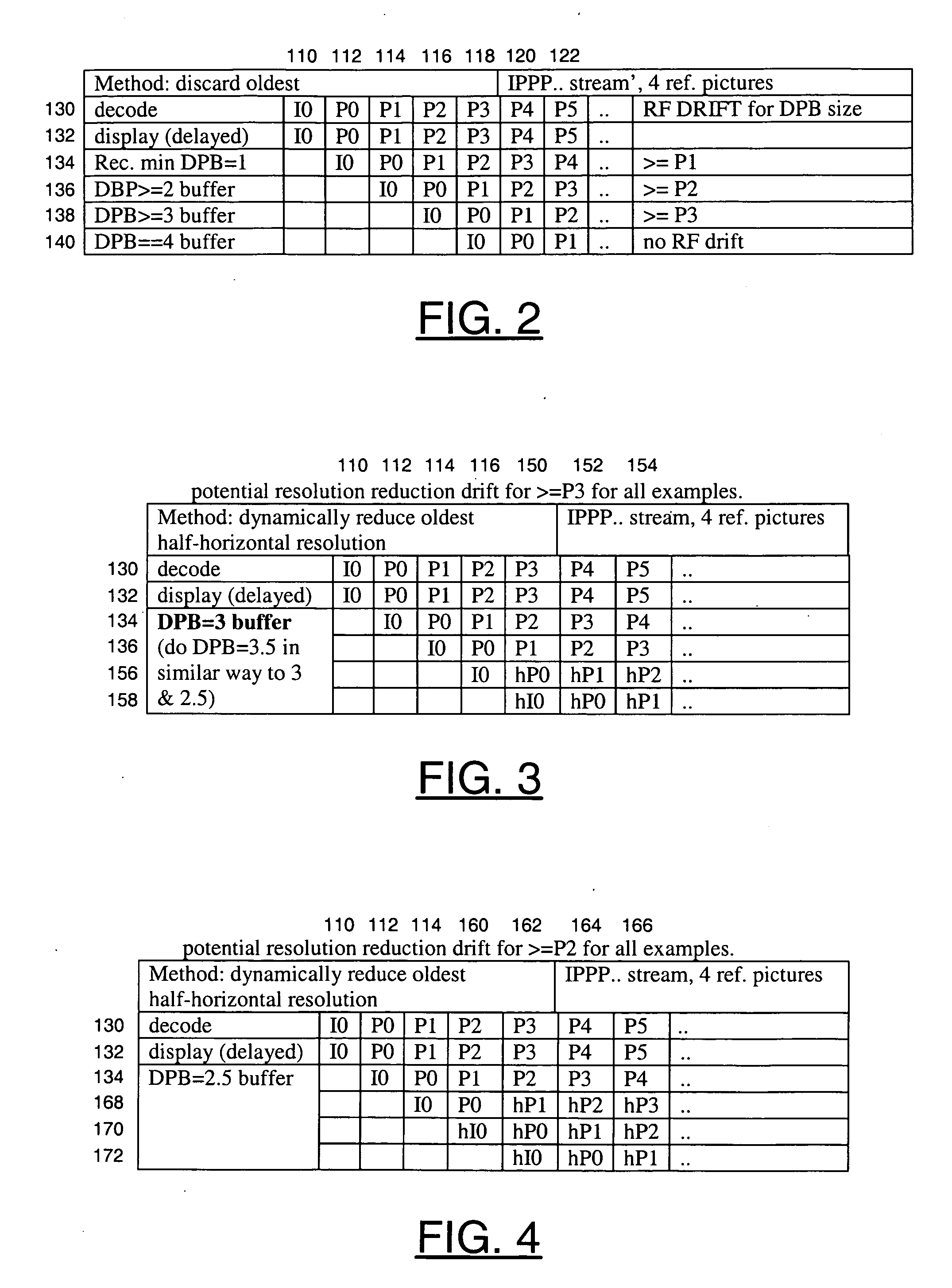Method for video decoder memory reduction
a video decoder and memory reduction technology, applied in the field of video decoding, can solve the problems of cost and size of the memory used to buffer pictures in the decoding process, and the conventional solution is far from optimal in terms, so as to reduce the size of the decoded picture buffer, minimize potential drift and/or error, and minimize the effect of potential dri
- Summary
- Abstract
- Description
- Claims
- Application Information
AI Technical Summary
Benefits of technology
Problems solved by technology
Method used
Image
Examples
Embodiment Construction
[0027]Referring to FIG. 1, a block diagram of a circuit 100 is shown in accordance with a preferred embodiment of the present invention. The circuit (or system) 100 may be referred to as a media processor circuit. The media processor circuit 100 generally comprises a circuit (or module) 102 and a circuit (or module) 104. An input signal (e.g., BS) may be received by the circuit 102. An output signal (e.g., VOUT) may be generated and presented by the circuit 102. The circuit 102 and the circuit 104 may be in communication with each other to exchange data.
[0028]The signal BS may be a compressed video signal, generally referred to as a bitstream. The signal BS may comprise a sequence of progressive-format frames and / or interlace-format fields. The signal BS may be compliant with a VC-1, MPEG and / or H.26x standard. The MPEG / H.26x standards generally include H.261, H.264, H.263, MPEG-1, MPEG-2, MPEG-4 and H.264 / AVC. The MPEG standards may be defined by the Moving Pictures Expert Group, I...
PUM
 Login to View More
Login to View More Abstract
Description
Claims
Application Information
 Login to View More
Login to View More - R&D
- Intellectual Property
- Life Sciences
- Materials
- Tech Scout
- Unparalleled Data Quality
- Higher Quality Content
- 60% Fewer Hallucinations
Browse by: Latest US Patents, China's latest patents, Technical Efficacy Thesaurus, Application Domain, Technology Topic, Popular Technical Reports.
© 2025 PatSnap. All rights reserved.Legal|Privacy policy|Modern Slavery Act Transparency Statement|Sitemap|About US| Contact US: help@patsnap.com



